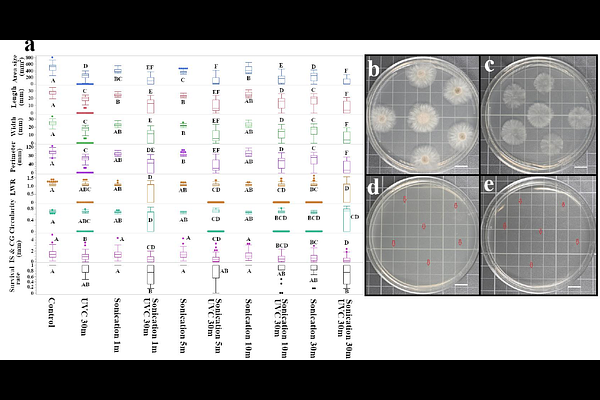Unveiling differential responses to UVB (305 nm) and UVC (275 nm) in cacao-infecting Colletotrichum gloeosporioides and Pestalotiopsis sp.

Unveiling differential responses to UVB (305 nm) and UVC (275 nm) in cacao-infecting Colletotrichum gloeosporioides and Pestalotiopsis sp.
Baek, I.; Jang, J. H.; Lim, S.; WANG, Z.; Cha, M.; Magill, C.; Kim, M. S.; Meinhardt, L.; Park, S.; Ahn, E.
AbstractSustainable control of microbial pathogens requires alternatives to chemicals, but physical methods like Ultraviolet-C (UVC) show variable efficacy linked to poorly understood pathogen-specific responses. Here, we investigate differential UVB/UVC responses in plant pathogenic fungi (Colletotrichum gloeosporioides, Pestalotiopsis sp.). Using hyperspectral imaging and machine learning, we dissect the physiological underpinnings of UV sensitivity. UVC proves more potent than UVB, with Pestalotiopsis sp. showing significantly higher resistance than C. gloeosporioides isolates. Crucially, hyperspectral signatures correlated with resistance, revealing UVC-induced photopigment changes, biochemical disruption, and oxidative stress markers in sensitive isolates, contrasting with minimal perturbation in the resistant isolate. Machine learning accurately decoded these complex phenotypes for classification. This understanding enabled enhanced inactivation via optimized pulsed UVC and synergistic sonication. We link distinct physiological states, non-invasively detected via hyperspectral imaging, to fungal UV resistance, demonstrating how integrating advanced phenotyping and machine learning provides a mechanistic basis for optimizing physical pathogen controls.